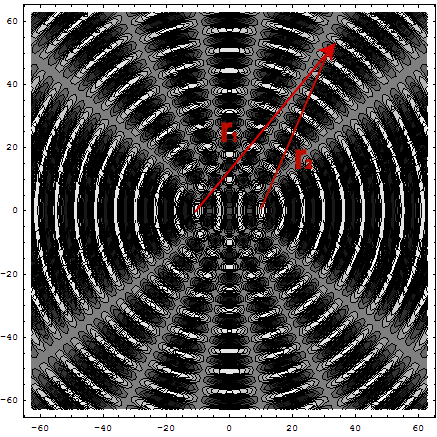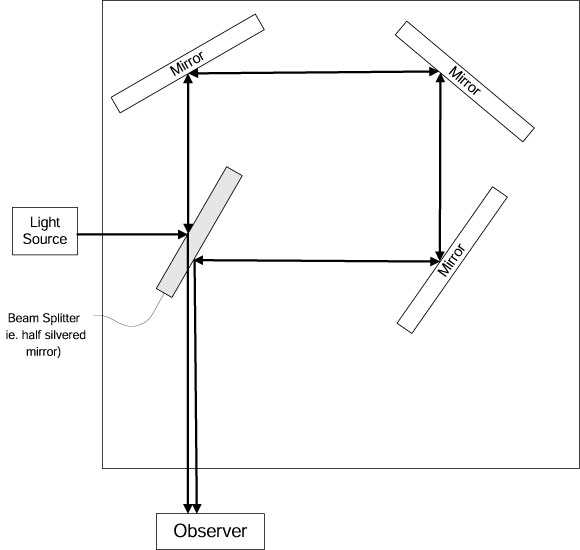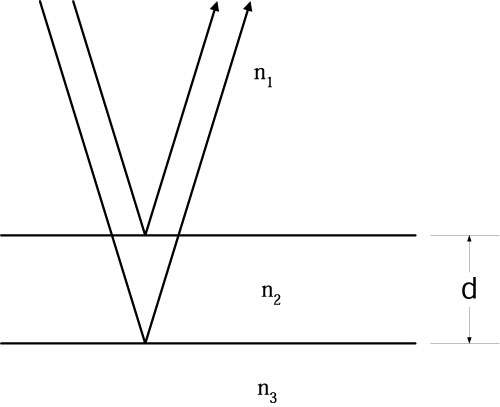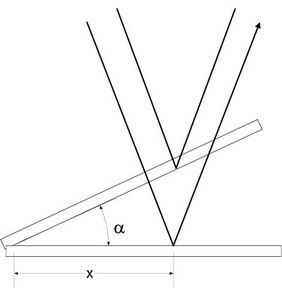Think of when you drop a pebble into a pond, you will see circular waves
eminate from the point where you dropped the pebble.
When
you drop two pebbles side by side you will see a much more complicated
pattern:
Likewise
with electromagnetic waves, you can get interesting interference phenomena
when waves eminate from two point sources.
Young's double slit.is an excellent example of two source interference. The
equations for this are what we worked out for two sources above. Interference
is an excellent way to measure fine position changes. Small changes in
Δ
r
make big observable changes in the interference fringes.
A particularly useful example of using interference is the Michelson
interferometer. This can be used to measure the speed of light in a medium,
measure the fine position of something, and was used to show that the speed of
light is a constant in all directions.
When
Δ
r
,
the path length difference in the two arms is
Δ
r
=
nλ
then the rays of light in the traveling down the center of the apparatus will
interfere constructively. As you move off axis the light travels slightly
different lengths and so you get rings of interference patterns. If you have
set up the apparatus so that
Δ
r
=
nλ
and then move one of the mirrors a quarter wavelength then
 and you get destructive interference of the central rays. Thus you can easily
position things to a fraction of a micron with such a set up.
and you get destructive interference of the central rays. Thus you can easily
position things to a fraction of a micron with such a set up.
What really matters is the change in the optical pathlength. For example you
could introduce a medium in one of the paths that has a different index of
refraction, or different velocity of light. This will change the optical
pathlength and change the interference at the observer. Thus you can measure
the velocity of the light in the introduced medium.
Michelson and Morely used this technique to try to determine if the speed of
light is different in different directions. They put the whole apparatus on a
rotating table and then looked for changes in the interference fringes as it
rotated. They saw no changes. In fact they went so far as to wait to see what
happened as the earth rotated and orbited and saw no changes. They thus
concluded that the speed of light was the same in all directions (which nobody
at the time believed, even though that is the conclusion you draw from
Maxwell's equations.)
Another application of interference is a a gyroscope, ie. as device to measure
rotations.
If the apparatus is rotating, then the pathlengths are different in different
directions and so you can use the changes in the interference patterns to
measure rotations. This is in fact how gyroscopes are implemented in modern
aircraft.





























